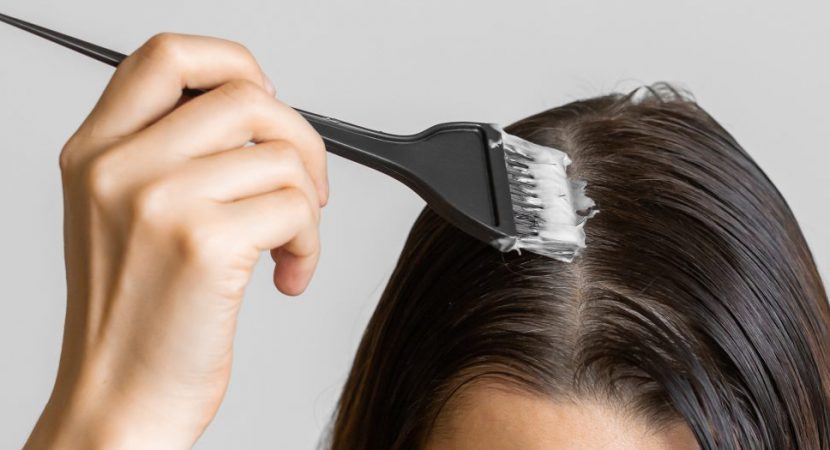Applying at-home hair colour but not happy with the results? Check if you’re making these 6 mistakes.
☒ Hair washing before dyeing
You shouldn’t wash your hair just before colouring. It is best to do it 1-2 days prior so that a natural, protective filter forms on your hair. A thin layer of sebum on the surface of the hair protects it from the strong effects of the colouring mixtures. Additionally, it protects the scalp from irritation and dryness. During this time, avoid strong styling products, oils and silicones, which disrupt the penetration of colour from the hair dye. Hair shouldn’t be dirty or greasy before colouring.
☒ Skipped patch test
Always read the leaflet and perform a patch test before application. A patch test involves applying a little hair dye to one of the selected areas on your body: the bend of the elbow, behind the ear, the neck or the area below the hairline. Wait 15 minutes – if you feel itching, burning or any discomfort it means that the cosmetic is irritating you. However, this doesn’t mean that every hair dye has to be allergenic. Remember to perform a patch test before every colouring – even the same colour as always – some allergic reactions only become active at a certain stage.
☒ No skin protection
Hair dye stains that are difficult to wash off are avery common. Stained forehead definitely spoils the final result of colouring. To avoid unsightly stains, use petroleum jelly or a greasy moisturiser. Apply a thin layer to the forehead line, neck and ears. You can also try specialised hair cosmetics that protect against staining. They come in the form of creams or ointments. Be sure to wear protective gloves during colouring!
☒ Colouring damaged hair
Every colouring treatment damages the hair more or less, depending on the colouring product used. Frequent and radical colouring or bleaching can lead to irreversible damage. The result is dry, thin and brittle hair that can only be cut. Colouring damaged hair is a risk not worth taking. When you notice the condition of your hair geeting worse, give it a break from hair dyes and bleaches. In the meantime, provide your hair with a deep repair: masks, conditioners and oils. Remember, colouring is not the way to nourish your hair!
☒ Wrapping coloured hair in foil
Oxygen access is essential for the product to penetrate deep into the hair and change the shade. Do NOT wrap your hair in aluminium foil or plastic bags! Contrary to popular belief, it doesn’t speed up colouring. Hair needs to breathe during colouring. Wrapped in foil, your hair may overheat or in the worst case scenario “burn”. If you want your hair to be properly thermo-insulated, reach for professional hair strips or gentle foam strips to make the colouring procedure easier at home.
☒ Wrong product application
Applying the colour section by section feels like a waste of time? Don’t be surprised if the final result is uneven colour distribution. Before colouring, brush your hair thoroughly and divide it into sections – hairdressers usually separate it into 4 parts: 2 at the top and 2 at the bottom. Prepare a bowl, hair dye brush and a comb. Apply the colour starting from the roots (in a top to bottom motion) – section by section. Each section should be about 2cm wide. Finally, emulsify the color through the lengths and ends to ensure it’s distributed thoroughly.
Keep the hair dye on your hair for as long as the manufacturer recommends.


